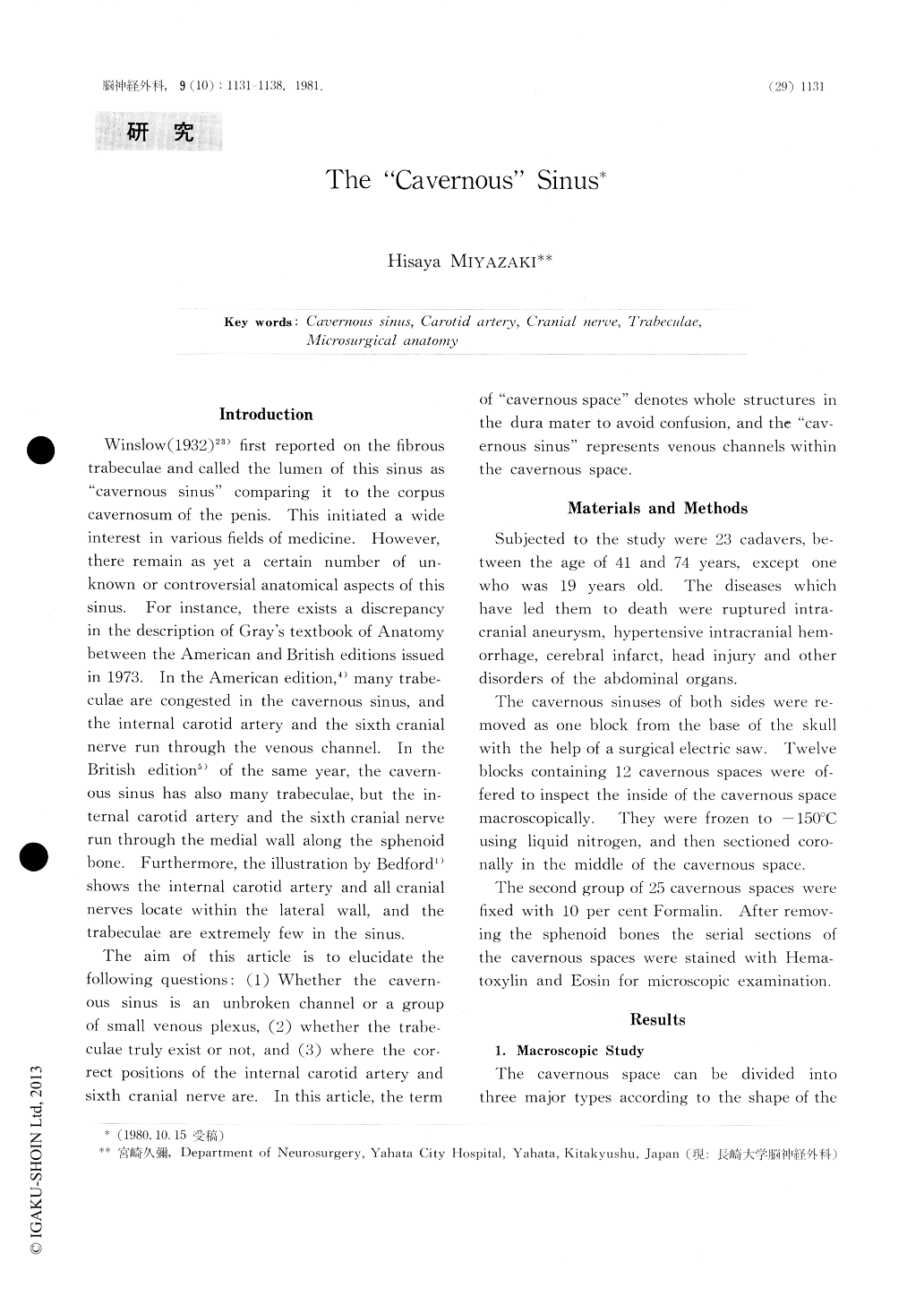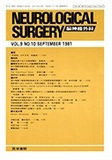Japanese
English
- 有料閲覧
- Abstract 文献概要
- 1ページ目 Look Inside
和文抄録
23症例,計37個の海綿静脈洞を採集し,その血管構築像について検索を行った.まず,12個の海綿静脈洞を液体窒素を用いて零下150℃に凍結し,海綿静脈洞の中央部でcoronalに切断して海綿静脈洞の内部構造を観察した,更に,25個の海綿静脈洞を10%ホルマリンで固定後,厚さ10-15μの海綿静脈洞の連続組織切片を作製し,ヘマトキシリン・エオジン染色を施してmicroscopicに検索した.
海綿静脈洞の外壁は最外層のdense connective tissueと,その内側のloose connective tissueよりなっており,神経,小動静脈ならびに脂肪組織を内包している上第Ⅲ,ⅣならびにⅤ脳神経は,標本すべてにおいて外壁中を走行しているが,第Ⅵ脳神経では,外壁中を走行しているものは全標本の48%に過ぎない.一方,内頸動脈は,その72%が全周をvenous sinusに取り囲まれて走行している上venous sinusの内面は内皮細胞によって被われている,venous自体の形態ならびにその大きさは,かなりの個体差があるが,ほぼ3群に分けられる.①梁柱の密生しているbroken venous channel(58%),②梁柱の少ないunbroken venous channel(33%),③残り9%が梁柱が存在せず,venous sinusが数個のbranchに分かれたsmall scattered venous channelsである.
The cavernous sinus was studied on 23 cadavers, 37 sinuses in total. Twelve sinuses were frozen to -150℃ using liquid nitrogen and cut in the middle portion to study macroscopically the whole interior structure of the sinuses. Remaining 25 were fixed 10 per cent Formalin and their serial sections were stained with Hematoxylin and Eosin for microscopic examination.
The lateral wall of the cavernous sinus consists of an outer layer of dense connective tissues and an inner layer of loose connective tissues. The third, fourth and fifth cranial nerves run through the lateral wall without exception, but the sixth cranial nerve was found in the lateral wall in only 48 per cent of the specimens. The internal carotid artery is surrounded by the venous sinus all over in 72 per cent of the studied cavernous spaces.
The inner surface of the venous sinus is covered with endothelial cell layers. The size and shape of the venous sinuses vary considerably,but they can be divided into three major groups; (1) the broken (58 per cent) or 2) the unbroken (33 per cent) according to amount of trabeculae and 3) the small scattered venous channels without trabeculation (9 per cent).

Copyright © 1981, Igaku-Shoin Ltd. All rights reserved.


